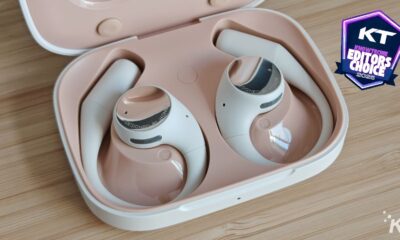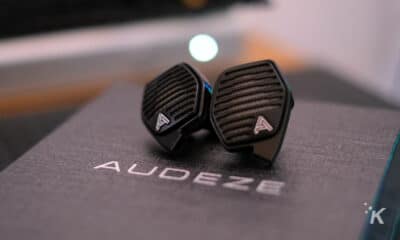Audio
Review: Tula mic and standalone recorder – retro charm is a winner
The Tula Microphone raised over $400k on Indiegogo at the end of last year.
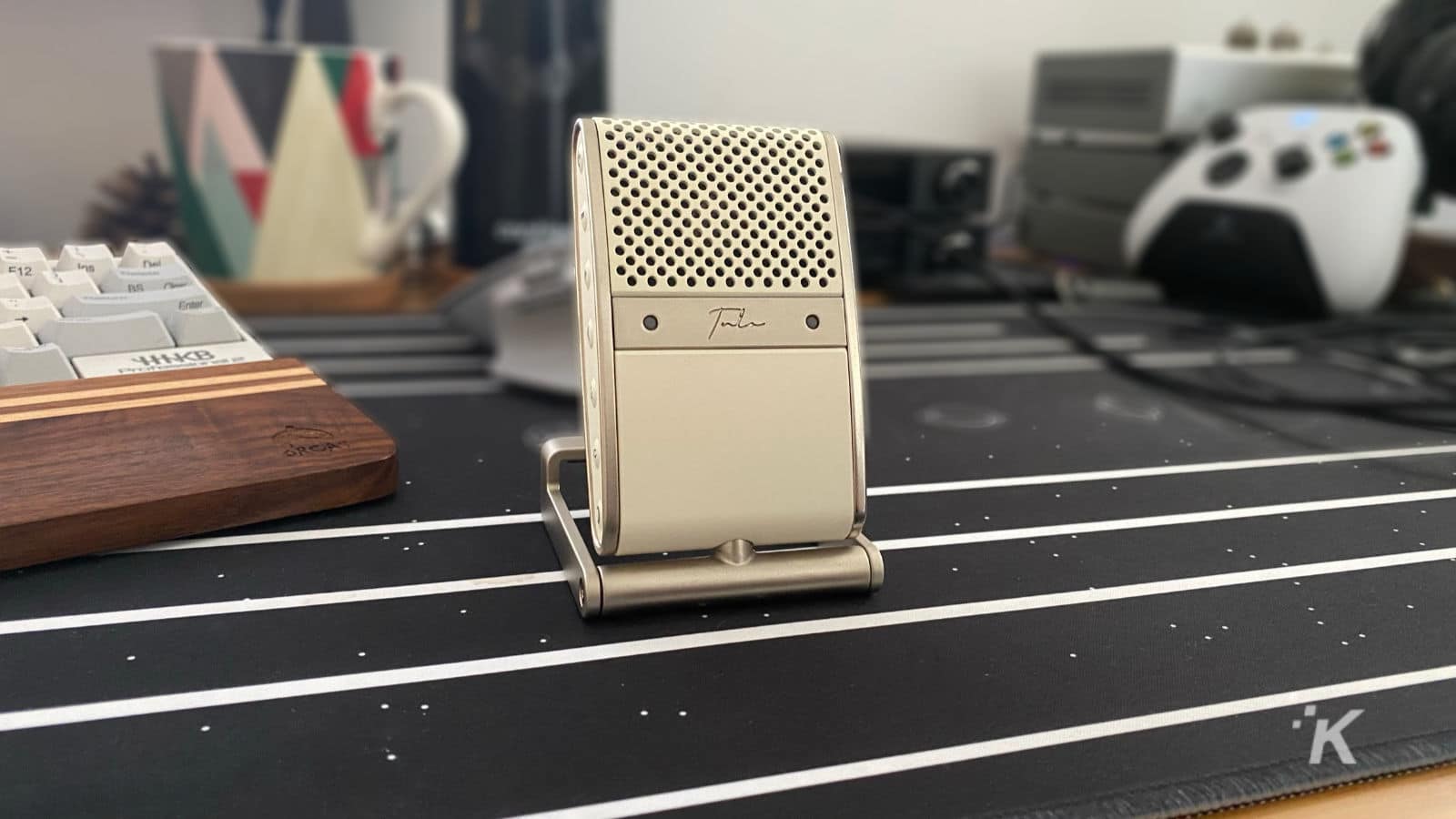
Just a heads up, if you buy something through our links, we may get a small share of the sale. It’s one of the ways we keep the lights on here. Click here for more.
[letsreview postid=”147690″]
It seems there’s no end to new startups putting their debut devices on crowdfunding sites. We’re looking at one today, the Tula Microphone, from Tula Mics. It’s a standalone audio recorder with a decidedly retro feel, that also doubles as a USB-C microphone.
The Tula Microphone raised over $400k on Indiegogo at the end of last year, and we’ve got a production model to put through its paces. We’ll go through the specs, how it sounds, and more. Is this retro-futuristic mobile recorder up to modern requirements?
So, what’s it all about?
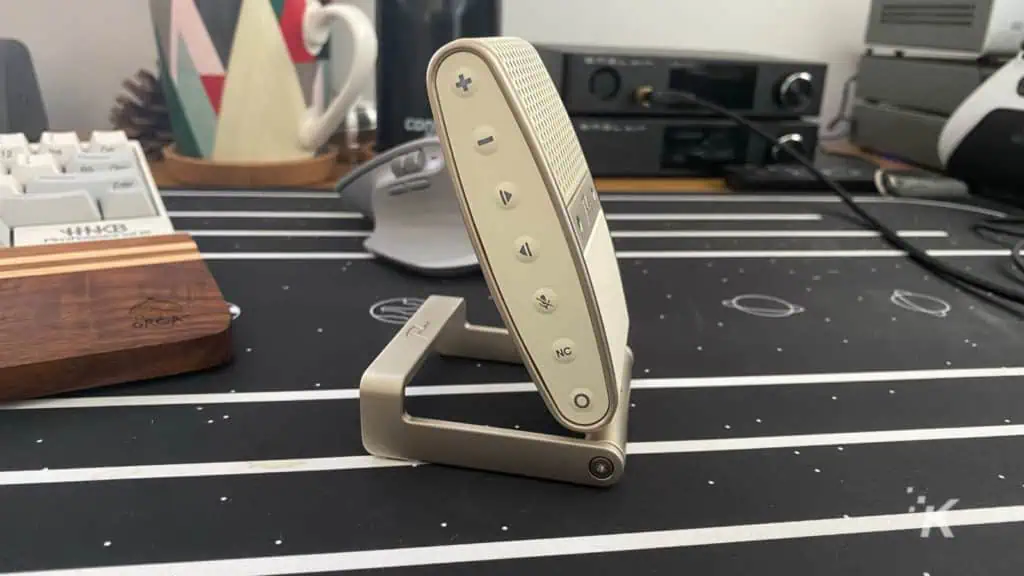
This diminutive device is about the size of a pack of playing cards and kinda reminds me of an early tricorder from Star Trek, or one of those old-style electric shavers. You can get it in black, red, or the classy cream color that we’re reviewing.
The Tula has both Omni-directional and cardioid capsules inside, which makes it useful for solo recording or for recording interviews for podcasts or other use. When used in standalone recorder mode, you get 14 hours of battery life (or roughly 10 hours with ANC on), with 8GB of storage to keep all of those recordings, in WAV format. It’s also got a USB-C port on the back case, which lets you use the mic with other devices as a USB mic.
The longer sides hold all of the controls, which are all behind membrane-style buttons. The left-hand side has buttons for adjusting microphone gain, skipping forwards/back between recordings, a mute, and buttons to control the noise cancellation and changing the mic capsule that’s being used between Omni and cardioid. The right side has power, play/pause, stop, record/pause, volume up/down for playback, and a 3.5mm jack which can be used with a lavalier microphone or with headphones for playback.
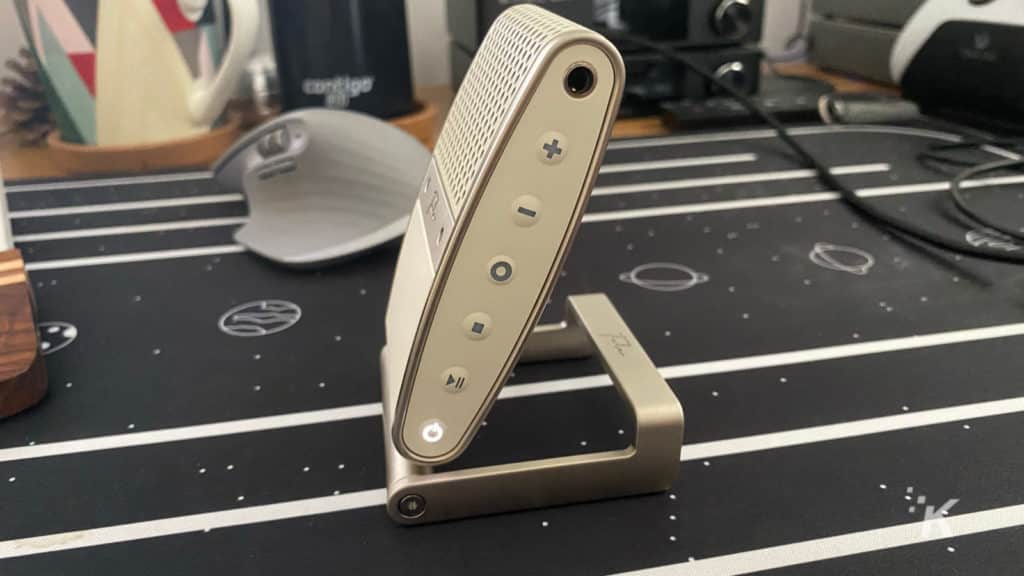
The included flip-out stand is solid and puts the mic in a nice position for desktop use. It also comes with a screw-on stand if you want to use the mic with a boom arm. The front face has two LED lights, the left-hand one turns red when the mic is in use, and the right is a level meter that shows green when it detects audio, and yellow if your audio gain is too high, so you know to turn down the gain to avoid clipping.
So, is it any good?
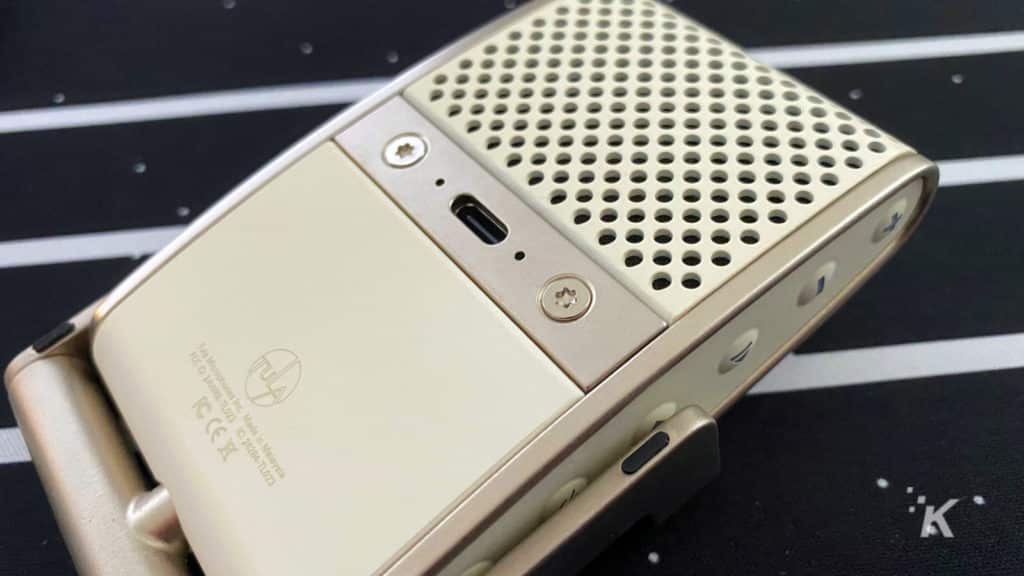
Any mic you buy at this price bracket comes with an expectation of good sound capture, and the Tula doesn’t disappoint. It sounds great, and it’s a huge improvement over the other USB microphone I’ve had connected to my computer. Being able to switch between cardioid (its default setting) and Omni makes the Tula more versatile, and means you only need to carry one mic for doing interviews.
The star of the show (except for those beautiful retro-futuristic curves) is the Klevgrand Brusfri noise cancellation algorithm. I found it able to tear out the very annoying hum of my central air handler’s fan, an air purifier, and it did an admirable job of traffic noise reduction.
It’s not as powerful as a dedicated audio repair plug-in, but you can use one of those afterwards if you prefer, as the Tula records two files when you use ANC – one with cancellation and one without. Anyone who uses transcription services after the fact for lectures or interviews will get good mileage from the noise cancellation, as it will produce audio files that are easier for those services to work with.
So, should I buy it?
For $200, the Tula mic is a solid debut from the company of the same name. It’s stylish, solidly built, and sounds great. Once you get the hang of letting the ANC sample the background noise you want to remove, it works well to reduce that noise while you’re speaking.
If it was just a portable recorder, I’d still have no reservations recommending it. Doubling as an external mic for your computer via USB-C makes the Tula even more versatile, and the included mount to use it on a boom arm is a nice touch.
Have any thoughts on this? Let us know down below in the comments or carry the discussion over to our Twitter or Facebook.
Editors’ Recommendations:
- Review: Dragon Touch MAX10 Plus – a solid, affordable 10″ tablet
- Review: Airthereal AGH380 Air Purifier
- Review: HIFIMAN HE400i 2020 Edition – big sound, small price tag
- Review: Trova Go lockbox – discretion can be stylish
Just a heads up, if you buy something through our links, we may get a small share of the sale. It’s one of the ways we keep the lights on here. Click here for more.
















